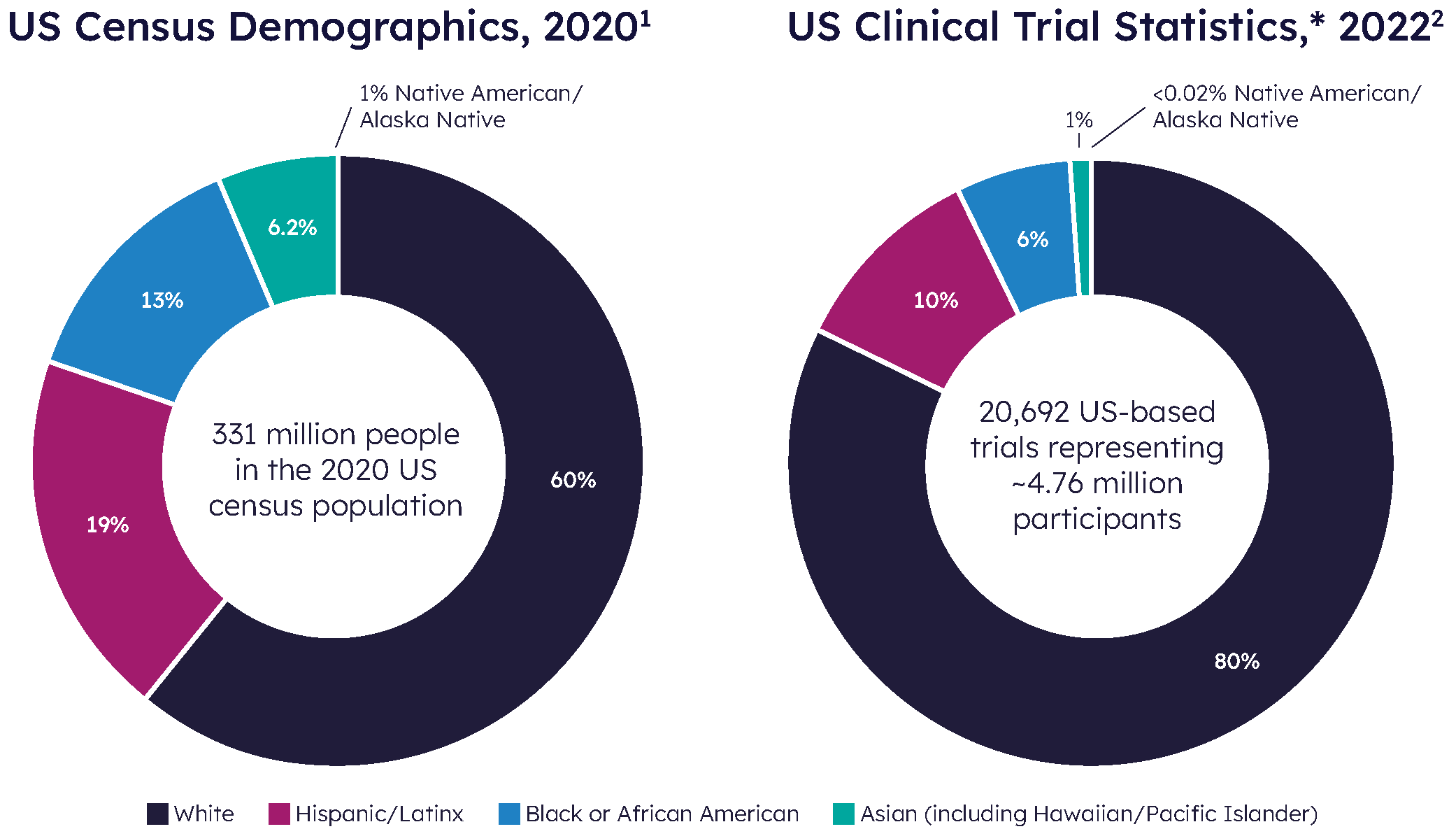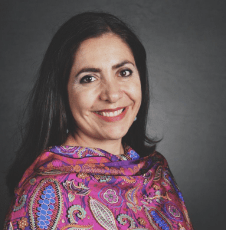Practical Approaches to Clinical Trial Diversity
Article
Clinical


“Diversity in clinical trials ... this is such a hot topic, so relevant to our industry,” says Claire Riches, Citeline Vice President of Clinical Solutions. She adds that although it has been top of mind for the past couple of years, clinical trial diversity is gaining momentum.
In a recent Citeline webinar, “Navigating the Maze of Diversity in Clinical Trials,” Riches and panelists discussed best practices in increasing diversity in clinical trials and meeting new US Food and Drug Administration (FDA) requirements for clinical diversity plans. As the charts below indicate, clinical trial participation does not reflect population demographics.

*Note: Of the 20,692 US-based trials represented, only 43% (8,898) reported any race/ethnicity data.
 Lorena Kuri, Bristol Myers Squibb
Lorena Kuri, Bristol Myers Squibb
Lorena Kuri, Director, Clinical Trial Diversity & Inclusion at Bristol Myers Squibb, concurs with Riches. “I think that since clinical trial diversity became a relevant topic to others that were not probably very involved in this, we have seen an increase year over year. In our case, the past 12 months, we’ve been able to look to other types of relevant underrepresented groups that in the past were not really considered.” In addition to racial and ethnically diverse populations, this includes sexual and gender minorities as well as people with disabilities.
“How diverse are your study teams?” she adds. “Do you have someone who is representing the populations” you’re trying to recruit? She says it is also important to understand the baseline or distribution of gender equity in principal investigators.
GSK started its diversity push with a 17-year retrospective study of its US clinical trial diversity. Clare Gibson, Associate Director, Global Demographics & Diversity Analytics for GSK, notes that this year GSK is ramping up its diversity efforts. “We expect 50 percent of our Phase III trials to meet or exceed the goals for recruitment.” By conducting outreach and gathering feedback from various patient populations, GSK has been able to unlock some huge recruitment potentials. Gibson adds that the way GSK collects demographic data within its electronic data capture (EDC) forms matches how it sets targets for enrollment.
 Leo Russo, Pfizer
Leo Russo, Pfizer
Pfizer is implementing a multipronged approach to improve clinical trial diversity, including trial emulation. In traditional trial emulation, investigators collect existing data and apply it to measure the effectiveness of a medicine, instead of conducting a full clinical trial. Pfizer is applying this methodology to recruitment, says Leo Russo, PhD, Vice President and Head of Global Medical Epidemiology. He says Pfizer was “looking to see what inclusion/exclusion criteria really hurt our ability to recruit diversely. Is it hurting the patient pool? Is it hurting just how diverse the patient pool is?“ Russo says a diversity and recruitment plan is part of the clinical development plans at Pfizer.
AbbVie’s Natalie Monegro agrees with the multipronged approach. “We’ve also been working really diligently on building partnerships with patients and providers so that we can incorporate their feedback into the development process early on along with reviewing our eligibility criteria, making sure that we’re being as inclusive as possible,” says Monegro, Vice President and Head of Global Medical Epidemiology.
Riches emphasizes that having a clear diversity plan is just the beginning. Sponsors must actively engage and recruit a diverse patient pool. Kuri is quick to add that what works for one specific group may not work for another. “It’s about understanding the nuances and the cultural needs that, for example, Black patients have versus what a Hispanic or Latino patient may have,” she says.
“One size for recruitment doesn’t fit all,” Riches agrees.
 Clare Gibson, GSK
Clare Gibson, GSK
Fenwick Eckhardt, Citeline Head of Diversity Strategy, says that in order to truly understand different patient segments, sponsors must look at different data points. In terms of social determinants of health (SDoH), for example, one must look at income, transportation, and urbanicity. “What do these groups need from an engagement, an education perspective?”
“I’d also add that as well as having a good handle on the epidemiology data and published literature data,” says GSK’s Gibson, “we’ve also got a really close eye on the census-level data as well, really to understand those intersections between some of the demographics….”
The vast diversity among underrepresented groups requires sponsors to think outside the proverbial box. “I think that as an industry we are getting to be a little bit less risk averse and exploring innovation,” Kuri says. “In the past, who would have thought that either Amazon or Walmart or your own pharmacy would invite you to participate in a clinical trial? … We’re becoming a little bit braver on that space….”
 Natalie Monegro, AbbVie
Natalie Monegro, AbbVie
AbbVie’s Monegro reminds that in addition to creating awareness of and driving recruitment for trials, sponsors also must keep caregivers in the loop. Diversity efforts should also be geared toward participant retention.
Russo of Pfizer echoes the importance of retention. “It’s not just about recruitment,” he says. “It’s about retention and keeping them in the trial.”
Monegro says the best way to promote clinical trial diversity is to be an advocate, whether you’re a study coordinator, a patient, or an investigator. Riches adds that medical science liaisons (MSLs) in particular can be very effective advocates.
The pressure is on — and mounting — for increased clinical trial diversity. “We’re all facing the same new framework in the industry in which we need to respond, get more patients faster,” says Bristol Myers Squibb’s Kuri. “We need to report to FDA, we’re all under so many different pressure points.”
“We’re all in this together,” says Riches. “No one’s got the full answers. We’re still very early in this journey. We’re seeing definite momentum in terms of diversity plans, data that we use, how we use it, how we report. We’re seeing progress, and that is really important. We are not going to go from … A to Z in a matter of weeks, but as long as we can see progress, that we are recruiting the right patients to trials, giving them options, removing barriers, and ultimately that we can get new therapies in the hands of patients who need them faster.”
Kuri cautions that “we are not focusing on these clinical trial diversity efforts on once and done, but on something that is here to stay.”
See more trial diversity webinar insights, from the clinical planning perspective.
References:


